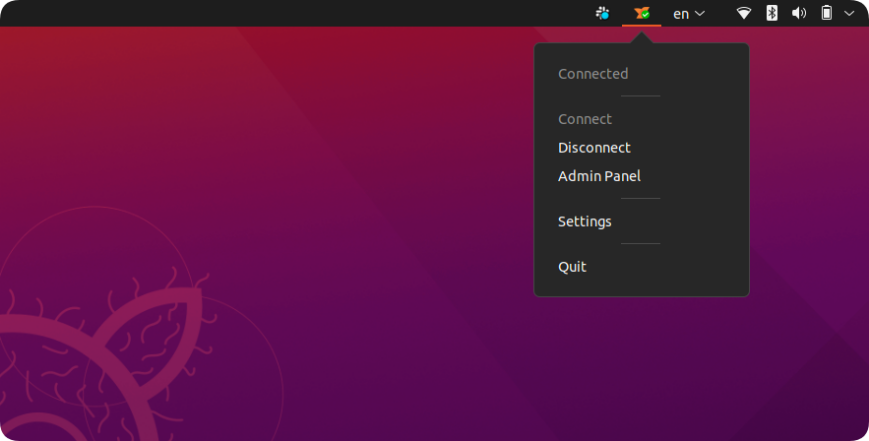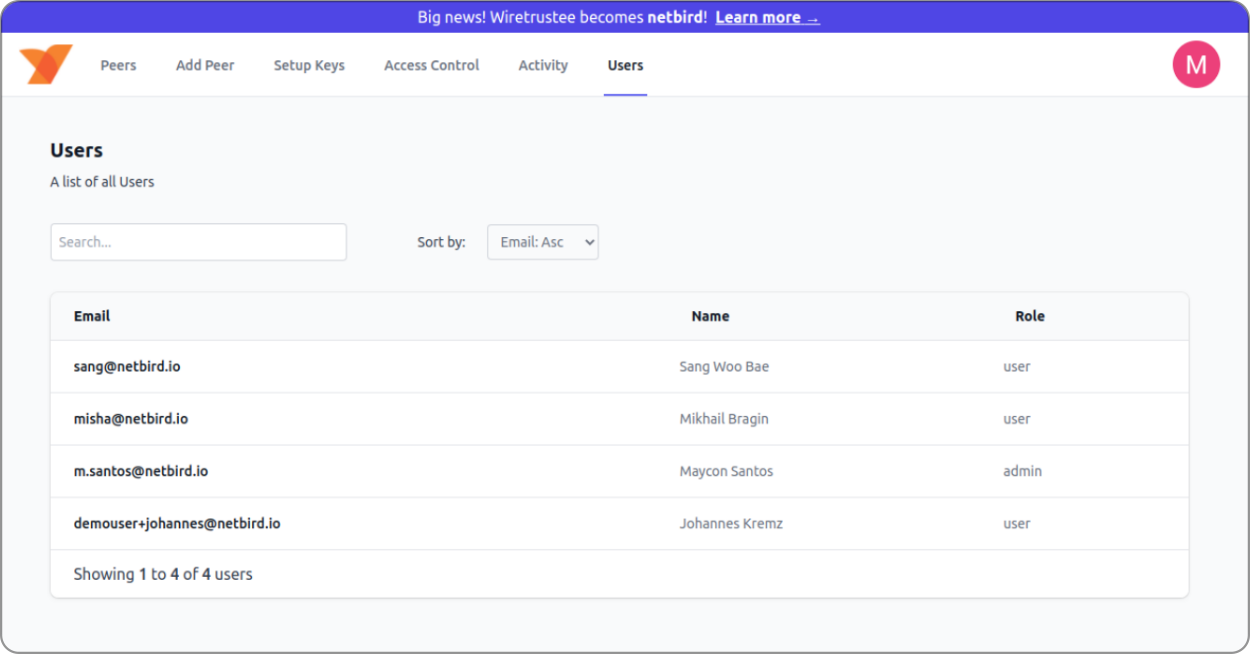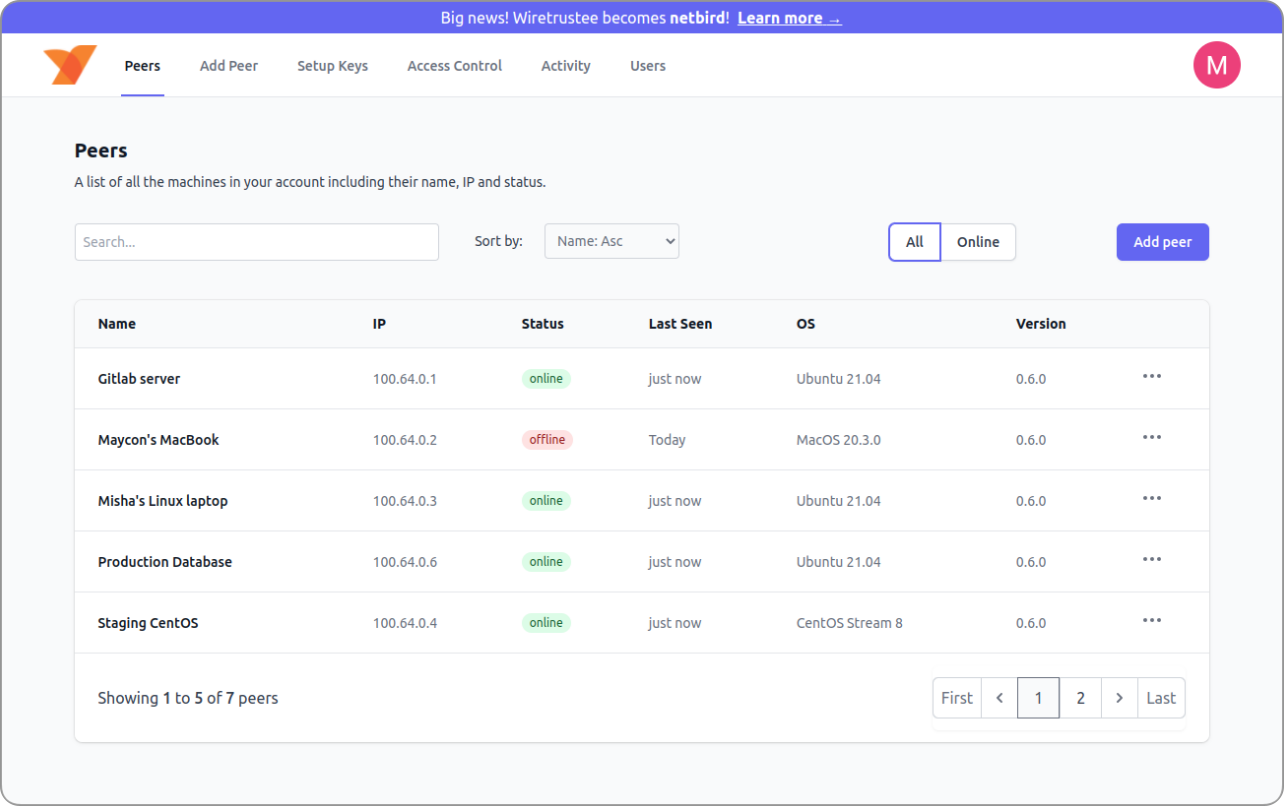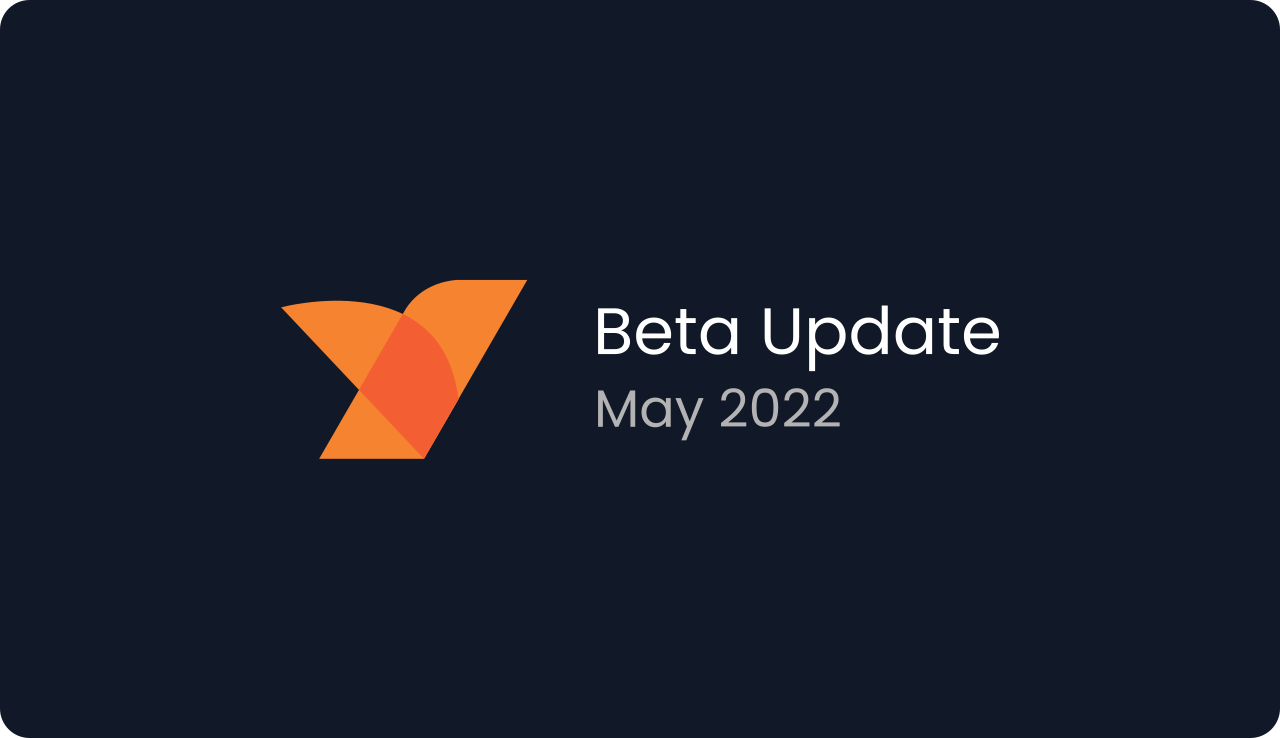A major update that brought Desktop UI clients, multi-user accounts, SSO, and more.
This update is the biggest since we released our managed version at the end of 2021. It brings lots of features that make it easy for businesses to create and automate secure private networks with WireGuard and simplify usage for personal use cases.
Another achievement - we have reached 2000 GitHub stars. A big Thank you to our open-source community! And by the way, please star us if you haven't done so yet => netbirdio/netbird :)
Here are all the highlights from May...
Desktop UI Clients
NetBird client was a command-line application so far, but not anymore! This release brings desktop UI clients to MacOS, Linux, and Windows. You can still use a command-line tool thought.
The UI client is a simple application that sits in the tray and allows you to quickly connect and disconnect from the network. We used awesome Go libraries fyne.io and systray to create a neat cross-platform application.
If you are curious to learn how we did it, then check our GitHub repo
See below how it looks! On Linux... :)

Interactive SSO Login
To make it easier to get started with NetBird and connect to your network in just a few clicks, we've added an Interactive SSO Login feature.
What is this? Well, when you click Connect in the UI client or run netbird up from the command line, you will be prompted to log in with the identity provider from your browser.
Your machine will be automatically registered in the network and even if you don't have an account, we will automatically create one for you!
This is especially helpful for teams. Our cloud-managed version will detect your organization by domain and all new devices will be added to your organization's account.
For example, devices registered with foo@organization.com and bar@organization.com will land in the account that belongs to organization.com.
Multi-factor authentication (MFA)
We have just added MFA to WireGuard-based networks!
The Interactive SSO Login feature automatically adds an extra layer of protection when identifying user devices - multi-factor authentication or MFA. If your Identity Provider has MFA enabled, then on device registration a user will be prompted to provide 2 or more factors to gain access to the network.
The most common setup is 2-factor authentication (2FA), where users need to log in with SSO and enter a code from an authenticator app.
Multi-user accounts
Being able to register a new machine with Interactive SSO Login wouldn't be that useful without multi-user accounts.
Every machine that has been registered with the interactive login is now automatically associated with a user who did the registration. You can now see the list of users in the admin panel under the "Users" tab.

Web Panel UX/UI improvements
We added a few features to our Admin Web Panel to improve usability for network administrators. Features such as peer search by IP address and name, filters, and sorting.
Similar improvements were made to the Setup Keys view, and only valid setup keys are displayed by default.
We built our web application using ReactJS and TailwindUI. These frameworks are just great and allowed us to quickly create a decent web UI. However, we had a few issues with the mobile layout that were fixed by an external contributor.
A Big Thank you goes to phaelmoita!
Just like the core NetBird repository, web UI is also open-source. The code can be found at netbirdio/dashboard.

Rebranding
At the end of March, we announced that Wiretrustee became NetBird.
We've changed the name, website, logo, and repository, however, the command line application was still using the old binary under path /usr/bin/wiretrustee.
We changed this and from now on you should use /usr/bin/netbird command instead.
We kept /usr/bin/wiretrustee for backward compatibility, but it will be removed in future releases.
What's next?
Many things!
But the main priority is ACL. The idea of this feature is to allow administrators to create different access groups so that certain machines or users can only access certain groups of machines.
We plan to release it in June - work in progress. Backend is almost there PR #306, web UI will follow shortly.
Get started
- Start using NetBird today: https://app.netbird.io
- Make sure to star us on GitHub
- Follow us on Twitter
- Join our Slack Channel
- NetBird latest release on GitHub
